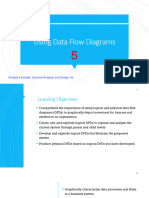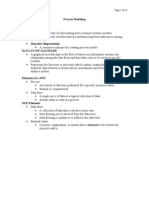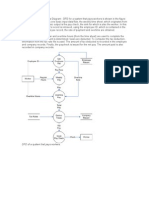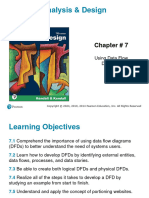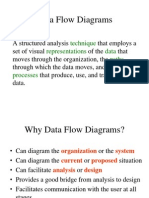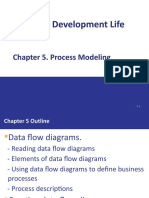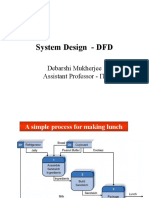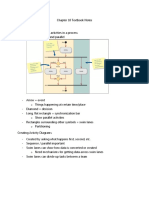0% found this document useful (0 votes)
67 views23 pagesData Flow Diagrams Guide
- Data flow diagrams (DFDs) use conventions like naming high-level processes after the whole system, naming subsystems, and using verb-adjective-noun combinations for detailed processes.
- Rules for DFDs include having at least one process and data flow in/out of each process. External entities should not connect to each other.
- The context diagram provides an overview with basic inputs, the general system, and outputs. Level 1 diagrams explode the context diagram into more detailed processes.
- Logical DFDs focus on the business operations and events, while physical DFDs show how the system will be implemented technically. Partitioning DFDs divides them into appropriate manual and computer-based
Uploaded by
Justin RinearsonCopyright
© © All Rights Reserved
We take content rights seriously. If you suspect this is your content, claim it here.
Available Formats
Download as DOCX, PDF, TXT or read online on Scribd
0% found this document useful (0 votes)
67 views23 pagesData Flow Diagrams Guide
- Data flow diagrams (DFDs) use conventions like naming high-level processes after the whole system, naming subsystems, and using verb-adjective-noun combinations for detailed processes.
- Rules for DFDs include having at least one process and data flow in/out of each process. External entities should not connect to each other.
- The context diagram provides an overview with basic inputs, the general system, and outputs. Level 1 diagrams explode the context diagram into more detailed processes.
- Logical DFDs focus on the business operations and events, while physical DFDs show how the system will be implemented technically. Partitioning DFDs divides them into appropriate manual and computer-based
Uploaded by
Justin RinearsonCopyright
© © All Rights Reserved
We take content rights seriously. If you suspect this is your content, claim it here.
Available Formats
Download as DOCX, PDF, TXT or read online on Scribd
/ 23



